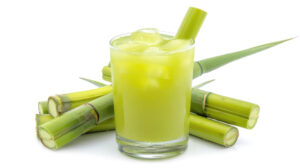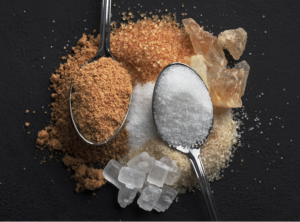Sugar: Originated In India – Till 15th Century It Was Rare And Expensive In Western World
Sugar is one of the quintessential ingredients found in almost every kitchen across the world. A very little-known fact is that sugar originated in India and till a few centuries back, it was very difficult and very very expensive to afford sugar to the vast majority of the world. It is very rare to find someone who knows the truth that sugar originated in India. In this article, let us explore the history of Sugar’s origin in India and how it became popular many millenniums later in other parts of the world.

The Quintessential Ingredient For Adding Sweetness
Imagine a world without sugar. In one way, it would be good as it helps with good health. But just imagine no desserts, no cakes – it must have been a very boring place. No wonder, Christopher Columbus and Vasco da Gama were driven to find a sea route to India. Thus bypassing the Arabs to get cheaper and better access to food from India.
A sweet gift from India to the world
As mentioned earlier, sugar originated in India, and the crystallization of sugar was discovered thousands of years before any other part of the world. Sugarcane is common in India but rare to find in most parts of the world. The technique of boiling sugarcane juice for extracting sugar originated in the country.
The very ancient medicine system of Ayurveda has a sub-branch called Rasayana which is very much ancient chemistry. The Indians had a deep understanding of chemical processes. It was no wonder that they figured out how to make sugar from sugar cane juice via a refining process by removing molasses. Ayurveda and Rasayana are very very ancient. As you may be aware – India is the oldest living civilization with a past that stretches many millenniums before the common era (i.e. zero BC). It is believed that the domestication of sugarcane started in tropical India and Southeast Asia in around 4000 BC and originally raw sugarcane was chewed by people to extract its sweetness. At a later point in time, the technique of boiling sugar cane juice for extracting sugar was discovered in India.
In the ancient world, when there were no planes and no easy way to travel to India – it was impossible to get sugar cane and plant in another part of the world. In addition in India, since there was a division of work in society – the merchants who traded in sugar would not know like the farmers the intricacies of cultivating sugar cane or processing the sugar. When the traders were making roaring profits by selling to far-off markets, they may hardly have any motivation to make sugar in far-off places away from India. For all these reasons for thousands of years till the 15th century – Sugar was mostly manufactured in India.
Evolution of sugar refining in India
When people around the world knew nothing about sweets, except fruits and honey, people in India were boiling the sap of sugarcane and making sugar.

As mentioned earlier, initially raw sugarcane was chewed by people for its sugary taste. Ancient Indian crafts have one specialization for mechanical workers. At one point they must have developed a device to crush the sugarcane and extract its juice. This was boiled to process jaggery and at a later time evolved to make sugar.
The sugar produced back then was a primitive sort of sugar, a mixture of sugar and molasses. Earlier, it was dark and in semi-solid form. However, some form of refining began early. The words ‘Sugar’ and ‘Candy’ are derived from Sanskrit words that refer to sugar crystals (Sharkara- pebble and khanda- broken piece).
Indian ‘sweet salt’ eventually spread across the globe
Eventually, sugar started spreading from India slowly. The Greeks and Romans imported tiny amounts from India calling it ‘Indian Sweet Salt’. Back in those days, travel and trade were limited, thus, sugar was rare and fabulously expensive.
During Alexander’s journey to India, those in his caravan in the 3rd century BC wrote about a wonderous reed in the part of India they visited and mentioned it produces honey without the action of bees. It is an obvious reference to sugarcane.

Why ‘sweet salt’ you may be thinking?
Well, back in those days sugar obtained used to form a lump of crystals. Even today, this form of sugar is called ‘misri’, or ‘sharkara’. It was broken into pieces called ‘khanda’ in Sanskrit language which means a fragment or piece. Since this sugar was not fine and did not have small crystals like today – it looked a lot like rock salt but was sweet. This explains the use of ‘sweet salt’ to describe sugar that came from India in ancient times.
Development of Candy in India
The word candy is derived from the Sanskrit word Khanda. By this time, India already had an established tradition in herbal medicine through Ayurveda. India being innovative, must have started using sugar solutions with various other fruits and vegetables. India is home to candying as Indians traditionally have been dipping or boiling different nuts, seeds, fruits, and vegetables in sugar syrup. Ginger dipped in sugar to form Ginger candy is quite a common thing even today in India. It helps with cough relief. Candied Indian gooseberry is another popular traditional recipe.
Right in the ancient age itself, Indians had developed 2 types of candy. The first discovered form of sugar was a lump of sugar crystals, also known as rock candy. The other one was dipping or boiling various nuts, seeds, fruits, and vegetables in sugar syrup.
Persia and China learn Sugarcane cultivation from India
During 600 CE, sugar cultivation and processing methods reached Persia. During Persian expansion, the techniques spread into the Mediterranean, throughout Mesopotamia. Even researchers have documented that China learned the techniques of sugar cane cultivation from India during 640 CE.
Later, in the early middle ages, Iranians developed ‘pulled taffy’ (fanid). Though it was a more sophisticated candy, it was no different from the original sugar candy as the syrup can be cooked to hard ball or soft crack form. However, it was a crucial development as tiny crystals are formed when the cooled candy is pulled and twisted giving it the first chewy-textured candy.

How Sugar came within reach of the common person in Europe
Sugar was considered a medicine in Europe and this continued until it became cheap. Later, the process of sugar refining was perfected in 1471. However, sugar was still expensive and rare until the West Indies became the chief source of sugar for Europe in the 17th century. Later in 1493, Columbus introduced sugar cane to the Caribbean.
When sugar from the West Indies became cheap and abundant, the candy-making process took off. Famous chef Francois-Pierre-de La Varenne published the first description of the different stages of boiling sugar syrup in 1677. With proper knowledge, people could go beyond the casual process.
Adding sweetness to recipes and making sugar from sugarcane originated in India
Today, the methods of sugar processing have come a long way. But, sugar happens to be originated in India ages ago and it was India where the idea of adding sweetness to other things originated. Later, over time, it spread all over the world, adding sweetness to everyone’s life.
